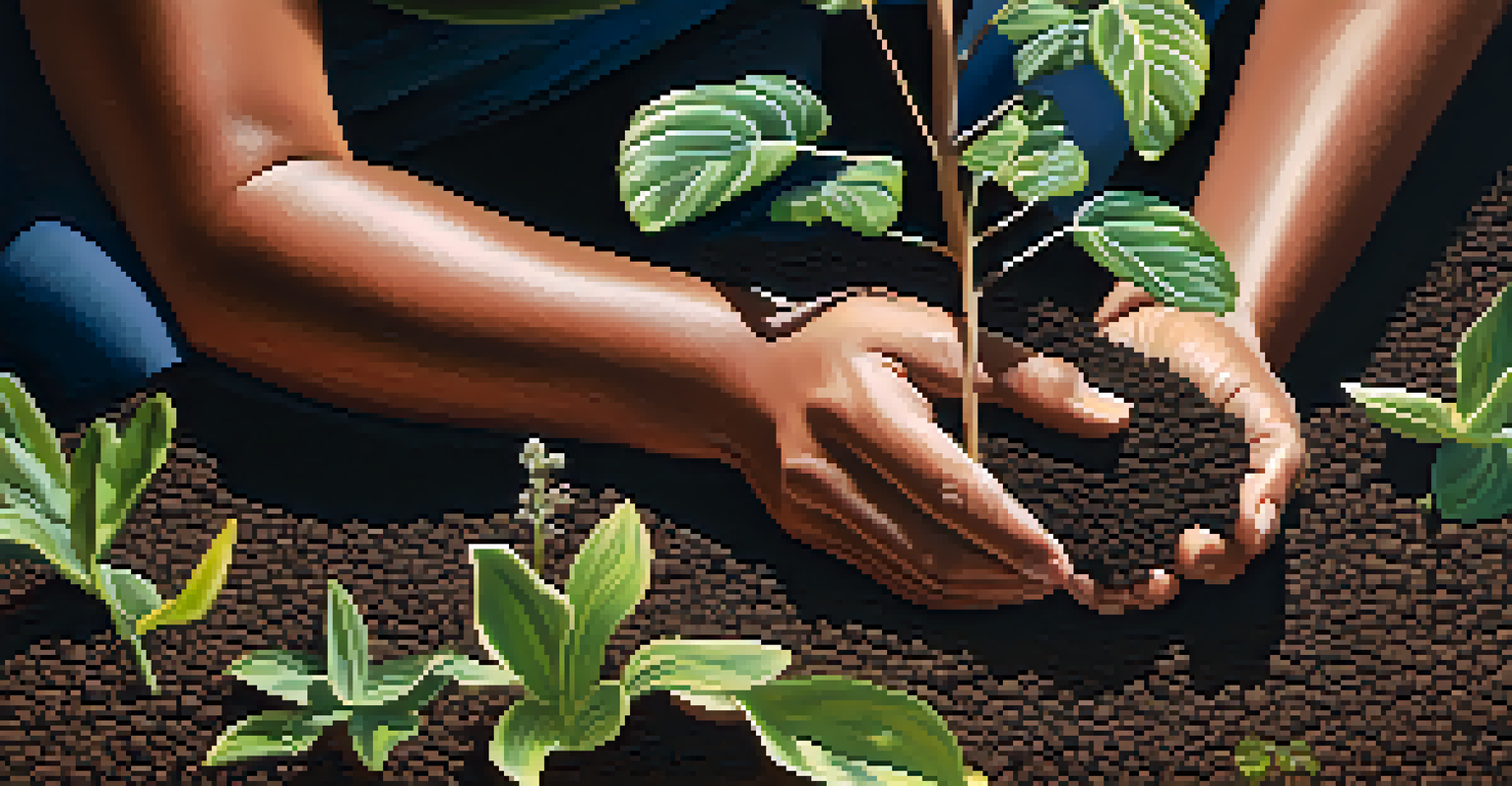Indigenous Perspectives on Land and Spirituality

The Deep Connection Between Indigenous Peoples and Land
Indigenous peoples have a profound connection to the land, viewing it as a living entity rather than just a resource. This relationship encompasses not only physical space but also cultural heritage and spiritual identity. For many Indigenous communities, the land is interwoven with their stories, traditions, and practices, making it an integral part of their existence.
We do not inherit the land from our ancestors; we borrow it from our children.
This perspective contrasts sharply with the more common industrial view of land as a commodity. While many see land primarily for its economic potential, Indigenous peoples emphasize stewardship and respect. They believe that caring for the land is essential for the health of future generations, a principle often encapsulated in the phrase 'We do not inherit the land from our ancestors; we borrow it from our children.'
As we delve deeper into this topic, it becomes clear that understanding these perspectives is crucial for fostering respectful relationships and practices. By recognizing the spiritual significance of land to Indigenous communities, we can better appreciate their worldview and advocate for their rights and needs.
Land as a Source of Spirituality for Indigenous Peoples
For Indigenous peoples, land is not just a geographical space; it is a source of spirituality and cultural identity. Many Indigenous cultures believe that every element of nature, from mountains to rivers, holds a spirit that deserves respect. This belief fosters a sense of responsibility to care for these elements, as they are seen as relatives rather than mere resources.

Ceremonies and rituals often take place in natural settings, further emphasizing the sacredness of the land. For instance, many Indigenous ceremonies involve offerings to the earth, acknowledging the reciprocal relationship between people and nature. These practices serve as reminders of the interconnectedness of all living beings and the importance of maintaining harmony with the environment.
Indigenous Land is Sacred and Alive
Indigenous peoples view the land as a living entity intertwined with their cultural and spiritual identities.
Understanding this spiritual connection is essential, especially in discussions about land use and conservation. Acknowledging the sacredness of land can lead to more respectful and effective collaboration between Indigenous communities and other stakeholders involved in land management.
Traditional Ecological Knowledge and Land Stewardship
Traditional Ecological Knowledge (TEK) refers to the understandings and practices that Indigenous peoples have developed over generations regarding their local environments. This knowledge encompasses sustainable practices that have been refined through centuries of observation and interaction with the land. TEK offers valuable insights into biodiversity, ecosystem health, and climate resilience.
The land is not just a resource, but a living entity that has a spirit.
Indigenous land stewardship practices often prioritize sustainability and balance. For example, many tribes utilize controlled burns to manage wildfires and promote healthy ecosystems. These practices illustrate how Indigenous peoples have long understood the importance of maintaining ecological balance, often contrasting sharply with industrial approaches that can lead to environmental degradation.
Incorporating TEK into modern land management can create more effective and sustainable practices. By valuing and integrating Indigenous knowledge systems, we can foster a more holistic approach to environmental stewardship that benefits both Indigenous communities and the broader ecosystem.
Cultural Narratives: Stories that Connect Land and Spirituality
Cultural narratives and stories play a vital role in shaping Indigenous perspectives on land and spirituality. These stories often convey teachings about the relationships between people, nature, and the spiritual world. They serve as both educational tools and a means of preserving cultural identity, passing down wisdom through generations.
Many Indigenous cultures have creation stories that explain the origins of the land and its significance. These narratives not only foster a sense of belonging but also reinforce the responsibility of individuals to protect the land. They often highlight the consequences of neglecting this sacred duty, emphasizing the interconnectedness of all life.
Colonization's Impact on Land Rights
The history of colonization has disrupted Indigenous relationships with their ancestral lands, leading to trauma and loss of cultural practices.
By sharing and honoring these stories, we can gain a deeper understanding of Indigenous perspectives. Engaging with these narratives allows us to appreciate the complexity of their relationships with land and spirituality, fostering a greater respect for Indigenous cultures.
The Impact of Colonization on Indigenous Land Relationships
The history of colonization has had a devastating impact on Indigenous peoples and their relationships with the land. Colonization often led to the dispossession of land, disruption of cultural practices, and loss of traditional knowledge. This separation from their ancestral lands has caused significant trauma and disconnection from their spiritual and cultural identities.
Many Indigenous communities are still grappling with the consequences of these historical injustices. The loss of land not only affects their physical survival but also undermines their spiritual practices and community cohesion. This ongoing struggle highlights the need for recognition and reparative actions to restore land rights and cultural practices.
Addressing the impact of colonization requires a commitment to understanding and supporting Indigenous sovereignty. By acknowledging the historical context, we can work towards reconciliation and the revitalization of Indigenous connections to the land.
Contemporary Indigenous Movements and Land Rights
In recent years, there has been a resurgence of Indigenous movements advocating for land rights and environmental justice. These movements are driven by a desire to reclaim ancestral lands and protect sacred sites from exploitation and development. Indigenous leaders are increasingly gaining visibility on the global stage, shining a light on the importance of their perspectives in contemporary environmental discussions.
Many of these movements emphasize the need for collaboration between Indigenous communities and governments or corporations. They advocate for the recognition of Indigenous sovereignty and the incorporation of traditional knowledge into decision-making processes. By fostering partnerships built on respect and mutual understanding, we can create more equitable and sustainable land use practices.
Education Fosters Indigenous Understanding
Incorporating Indigenous perspectives into education is crucial for promoting respect and reconciliation with Indigenous communities.
Supporting contemporary Indigenous movements is essential for restoring balance and justice. By amplifying their voices and respecting their rights, we can contribute to a future where Indigenous peoples can thrive in harmony with the land.
The Importance of Education in Understanding Indigenous Perspectives
Education plays a crucial role in fostering understanding and respect for Indigenous perspectives on land and spirituality. By incorporating Indigenous knowledge and perspectives into educational curricula, we can help bridge the gap between cultures. This understanding is essential for promoting reconciliation and respect for Indigenous rights.
Engaging with Indigenous communities through workshops, storytelling sessions, and cultural exchanges can provide valuable insights into their worldviews. These experiences can shift perceptions and promote empathy, encouraging us to view land not just as a resource but as a sacred, interconnected system.

Ultimately, education is a powerful tool for change. By learning about and supporting Indigenous perspectives, we can contribute to a more just and inclusive society that honors the wisdom of Indigenous peoples.